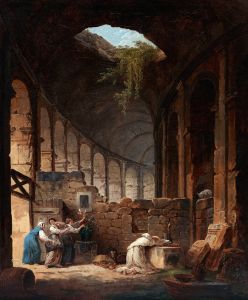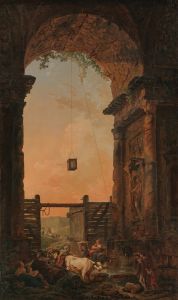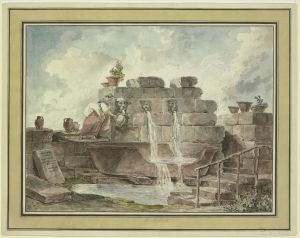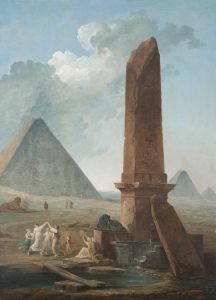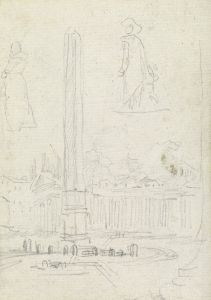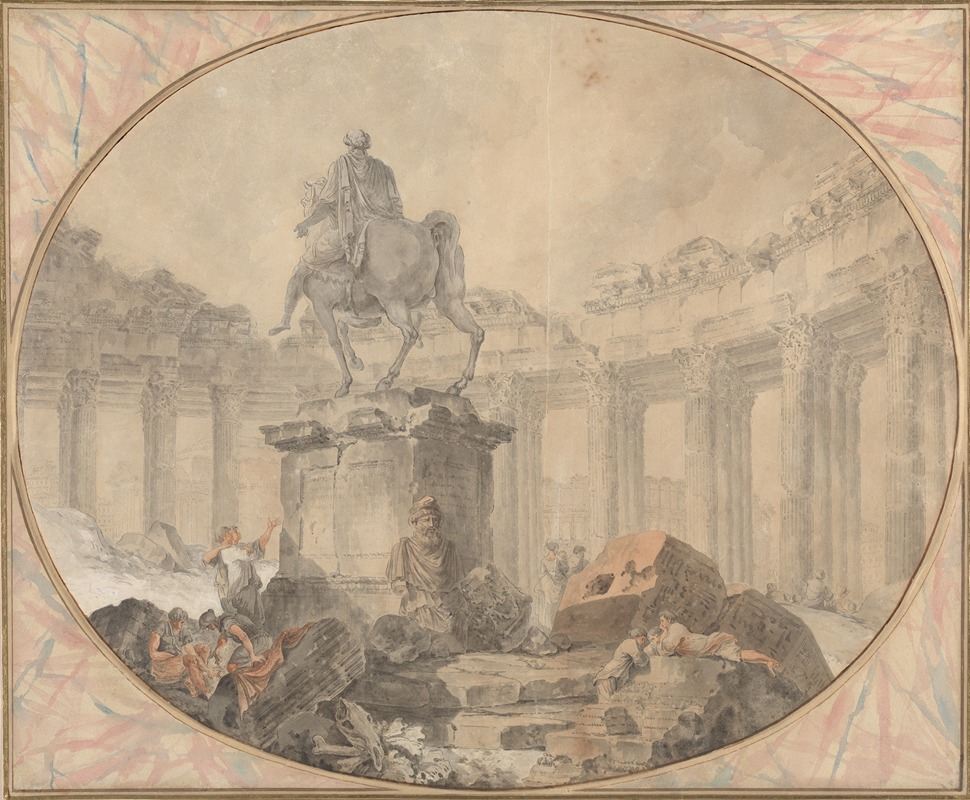
Equestrian Statue of Marcus Aurelius
A hand-painted replica of Hubert Robert’s masterpiece Equestrian Statue of Marcus Aurelius, meticulously crafted by professional artists to capture the true essence of the original. Each piece is created with museum-quality canvas and rare mineral pigments, carefully painted by experienced artists with delicate brushstrokes and rich, layered colors to perfectly recreate the texture of the original artwork. Unlike machine-printed reproductions, this hand-painted version brings the painting to life, infused with the artist’s emotions and skill in every stroke. Whether for personal collection or home decoration, it instantly elevates the artistic atmosphere of any space.
The "Equestrian Statue of Marcus Aurelius" by Hubert Robert is a painting that captures the grandeur and historical significance of the ancient Roman statue of the same name. Hubert Robert, a prominent French painter known for his landscapes and depictions of architectural ruins, created this work in the 18th century, a period marked by a renewed interest in classical antiquity.
The original equestrian statue of Marcus Aurelius is one of the few surviving bronze statues of a Roman emperor and is renowned for its artistic and historical value. It was erected in the late 2nd century AD and is believed to have been commissioned to honor the Roman Emperor Marcus Aurelius, who ruled from 161 to 180 AD. The statue is celebrated for its realistic portrayal of the emperor and the horse, showcasing the skill and artistry of Roman sculptors.
Hubert Robert's painting captures the statue in a setting that emphasizes its majesty and the enduring legacy of Roman art. Known for his ability to blend reality with romanticized elements, Robert often depicted ruins and historical monuments in a way that highlighted their beauty and historical significance. In this painting, he likely sought to convey the timeless nature of the statue and its importance as a symbol of Roman power and culture.
The equestrian statue itself is notable for its survival through the centuries, largely due to a case of mistaken identity. During the Middle Ages, it was mistakenly thought to represent the Christian Emperor Constantine, which spared it from being melted down, unlike many other bronze statues from antiquity. This fortunate error allowed the statue to be preserved and admired by future generations.
In Robert's time, the statue was located in the Piazza del Campidoglio in Rome, a site designed by the renowned artist and architect Michelangelo. The statue's placement in this prominent location further underscores its significance as a cultural and historical artifact.
Hubert Robert's depiction of the statue is more than just a representation of a historical object; it is an exploration of the themes of time, history, and the enduring nature of art. His work often reflects a fascination with the past and a desire to capture the essence of historical monuments, making them accessible and relevant to contemporary audiences.
The painting of the "Equestrian Statue of Marcus Aurelius" by Hubert Robert is a testament to the artist's skill in capturing the spirit of antiquity and his ability to convey the grandeur of historical monuments. Through his work, Robert invites viewers to reflect on the legacy of the Roman Empire and the timeless beauty of its art and architecture.







